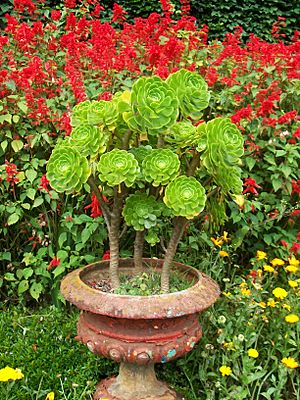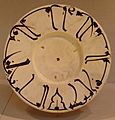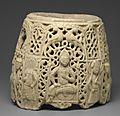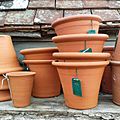Earthenware facts for kids
Earthenware is a type of pottery. It is made from clay that has been heated, or "fired," in a special oven called a kiln. Earthenware is known for being porous. This means it has tiny holes that let water pass through slowly. Because of this, earthenware usually needs a special coating called a glaze to hold liquids.
Earthenware is a very old material. For a long time, it was the most common type of pottery in many parts of the world, especially outside of China. It is softer than other types of pottery like porcelain or stoneware. You can even scratch it with a knife. When a piece of earthenware breaks, its edge looks rough and grainy.
Contents
What is Earthenware?
Earthenware is a kind of ceramic material. It is made by shaping clay and then firing it at lower temperatures compared to other pottery. These temperatures are not hot enough to melt the clay into a glass-like material. This is why it remains porous.
How Earthenware is Made
Making earthenware starts with shaping wet clay. This can be done by hand, with tools, or on a potter's wheel. Once the clay is shaped, it is left to dry. After drying, the clay piece is placed in a kiln. The kiln heats the clay to temperatures usually between 950°C and 1050°C (1742°F and 1922°F).
Why Glaze is Important
Because earthenware is porous, it can't hold water on its own. To make it waterproof, it needs a glaze. A glaze is a thin, glassy coating applied to the surface. After the glaze is put on, the piece is fired again. This second firing melts the glaze, creating a smooth, watertight layer.
Types of Earthenware
Many different kinds of pottery are made from earthenware. One common type is Terracotta. Terracotta is a reddish-brown earthenware often used for flower pots and sculptures. Earthenware can be thick and heavy, like a sturdy pot. It can also be made quite thin, though it is not as strong as stoneware or bone china. Unlike porcelain, earthenware is not see-through. It can also chip more easily.
Images for kids
-
Painted, incised and glazed earthenware. Dated 10th century, Iran. New York Metropolitan Museum of Art
-
Top section of a water jug or habb. Earthenware. Late 12th-early 13th century Iraq or Syria. Brooklyn Museum.
-
Chinese earthenware tomb sculpture. The Walters Art Museum
See also
 In Spanish: Loza para niños
In Spanish: Loza para niños







